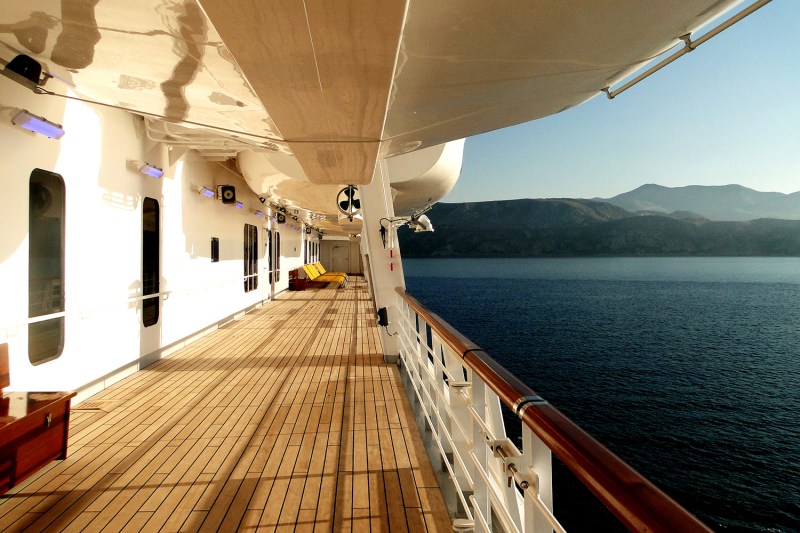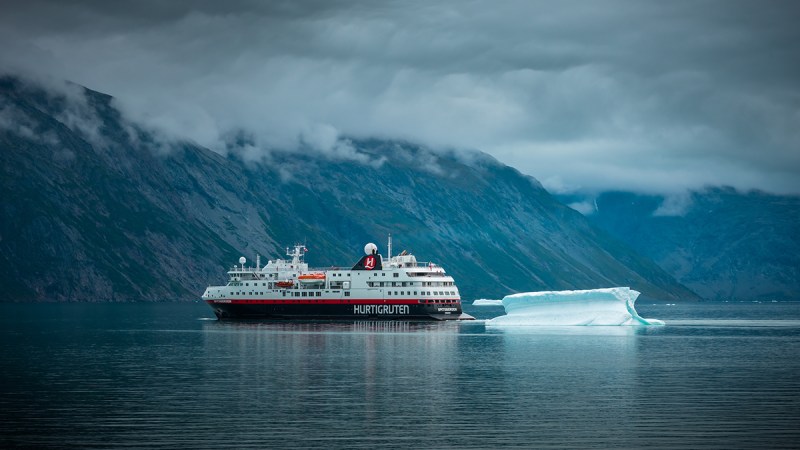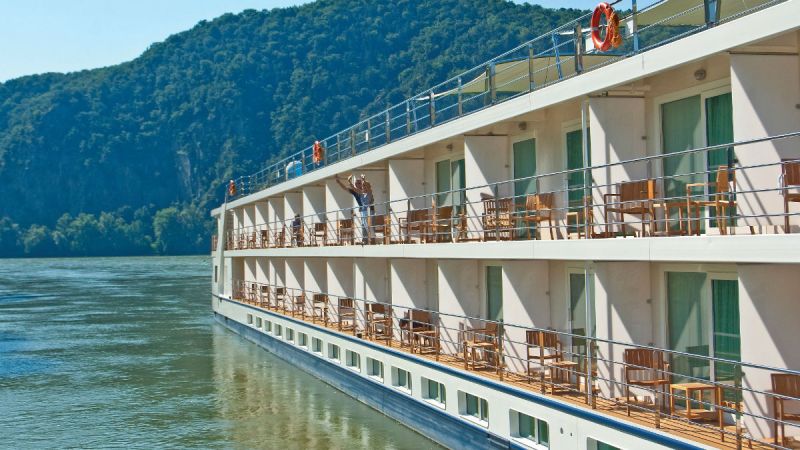
Vaccination fever is in the air, and while we’re definitely not out of the pandemic woods yet, it’s hard not to feel excited about being able to soon get back to all the things we used to enjoy. For lots of people, that means traveling.
With the CDC recently announcing that fully vaccinated individuals can once again travel nationally and internationally (albeit while still taking precautions like wearing masks), the pent-up wanderlust in travelers around the country is set to explode. And while airline travel is already starting to pick up again according to TSA data, there is still a big question mark for one major part of the travel industry: cruising.
Related Guides
- Should You Travel After Getting a COVID-19 Vaccine?
- When Will It Be Safe to Book Travel Again?
- Countries Vaccinated Americans Can Travel To Right Now
Prior to the pandemic, cruises were riding a giant wave of popularity and success. In 2019, nearly 30 million people enjoyed cruise vacations, almost double what it was a decade earlier in 2009 when 17.8 million people sailed. With good value packages, convenience, and attractive amenities and activities, it’s easy to see why cruise ships sailed into traveler’s hearts.
But it was cruise ships that featured some of the first COVID-19 horror stories. Who can forget the much-publicized saga of the Diamond Princess, where the world watched as COVID-19 swept through the ill-fated cruise ship in January 2020? At the time, it was among the first major outbreaks of the novel coronavirus outside of China and it showed the world just how swift and deadly the new virus could be. In the early months of the pandemic, COVID-stricken vessels saw thousands of infections and tens of deaths. Seeing how easily COVID-19 spread around a quarantined ship hit the cruising industry hard as travelers were scared away. In other instances, COVID outbreaks had travelers and staff stranded and confined to the ships as ports refused entry. Travelers were hit with story after story about outbreaks and strandings, driving home the point that COVID and cruising did not mix. Cruising was largely suspended, thousands of jobs were lost, and at the end of 2020, the industry reported billions in losses.
Now, though, the industry has had a year to regroup and improve its health and safety standards. From upgrading ventilation systems and improving cleaning to adding testing and screening protocols, many of the biggest names in cruising, like Royal Caribbean, are working hard to win back customer’s trust and show them that cruising in the era of COVID can be safe. Some companies have even floated the idea that it is among the safest options, with cruise ships acting as a sort of travel bubble.
So now the big question: Is it safe to get on a cruise ship this summer?

Even for experts, it’s a tough question to answer, as it depends on many different variables like vaccine rollout and infection rates dropping.
While some experts say that, as long as vaccine distribution continues going well and people keep taking precautions, we could have a fairly normal summer. But at the same time, health experts predict that the U.S. won’t reach herd immunity until fall. Similarly, travel industry professionals are also saying that traveling in the second half of 2021 will be the safest option.
At the moment, the CDC currently ranks cruising as being very high-risk for COVID-19, recommending that “all people avoid travel on cruise ships, including river cruises, worldwide.” Last October, they first released a Framework for Conditional Sailing Order, which outlined the health and safety steps that cruise ships need to take to resume operations again. On April 2, 2021, the order entered a new phase, with updates regarding agreements between cruise lines and port and health authorities, crew testing, and more. But one key takeaway from the new phase is that passenger operations on cruises wishing to operate in U.S. waters are still suspended.
Based on this order, most major cruise lines aren’t planning on launching until late spring or summer as they work to comply with CDC and other health and safety guidelines. Heavy-hitters like Carnival Cruises, Disney Cruise Line, and Holland America are set to restart cruising in July, and many other top cruise operators are similarly relaunching in June and July.
In addition to CDC guidelines, each cruise operator will have its own health and safety requirements. These vary by company, but most are requiring that travelers provide proof of full vaccination at least 14 days before departure.

These initial forays back into cruising will show how effective the preventative health and safety measures have been and whether cruise ships are indeed safe again. But there are still a lot of unknowns and what-ifs, like the possibility of an outbreak of one of the COVID variants.
So, as to whether or not it’s fully safe to go on a cruise this summer, it’s largely down to personal choice. If you feel safe traveling on a cruise as a fully vaccinated individual, feel that the ship and cruise line you’re traveling with has sufficient health and safety measures in place, and feel that it’s a risk worth taking, then yes, you can go cruising on a ship this summer. But you’ll still need to follow that cruise’s guidelines, which will likely include mask-wearing and social distancing protocols. So it won’t be as free-wheeling as cruising was in the past.
Based on the predictions and recommendations of health and safety experts and those in the travel industry, to be as safe as possible and also to have an overall more enjoyable experience, it’s best to wait until later in the year or next year to hop on a cruise. By then, more people will be vaccinated and we’ll have had a chance to see how effective precautions are at preventing outbreaks and spreads onboard.



